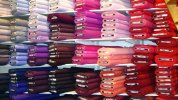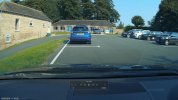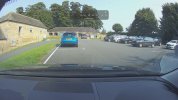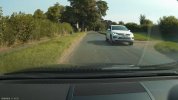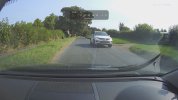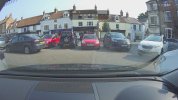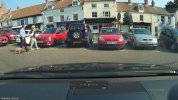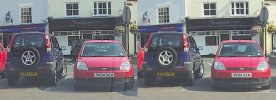Well, thanks so much for explaining photography and CPLs to me.

Your video doesn't exactly address what I am talking about, especially because it is a night time demonstration but it does address what CPLs do for windshield reflections.
Linear polarizers and circular polarizers don't quite work the same way as
@Nigel points out but if you adjust the CPL for reflections coming at the lens from a specific angle of reflection it will be out of phase with reflections coming from a different angle within a range of about 15 to 30 degrees. This is why depending on the placement of your camera you may have to adjust the CPL for an optimal compromise to accommodate the curvature of your windscreen. It will not universally null all reflections coming at you from all directions in an automotive environment as many here seem to believe.
Personally, after much experimentation I've concluded that I don't care for CPLs on dash cams even though I have used them from time to time. Despite claims that certain CPLs do not compromise night time performance, they are defacto ND filters. The ND effect can also slightly increase motion blur during the day. CPLs behave in fact even more like ND filters than a linear polarizer due to the extra layer of polarizing material in its construction. I've also noticed that in some circumstances that putting another layer of glass over your existing lens in the form of a CPL on a dash cam can have it's own set of issues depending on the particular lens and CPL combination.
Because the SG9665GC is so prone to dashboard reflections I decided to try a dash mat thinking it might help. I was blown away by how effective it was to the point where I basically gave up on the problematic CPL made for the GC (earlier version from a year ago, since revised). Actually, truth be told, the combination of the CPL
and a dash mat is quite remarkable but I found it to be essentially unnecessary. Any reflections I do see are usually way up on the corners of the image while the severe dashboard reflections that plagued me are nowhere to be seen. See the
images in this post for an example of a proper dash mat's effectiveness. You'll notice a few extraneous and subtle reflections here and there but of no real consequence but you will not see the dashboard reflected in the windscreen at all. That has been my universal experience with the dash mat whereas without it these images would be rather poor.
People should ultimately do what makes them happy and what works for them. Kindly remember that this discussion arose from a member questioning the purchase of camera that doesn't come with or have available a suitable CPL, so I suggested that all he needs is a good dash mat and I stand by that recommendation. The primary concern with dash cams is reflections of the dashboard in the windshield. Constantly shifting road surface reflections are essentially a non issue.





